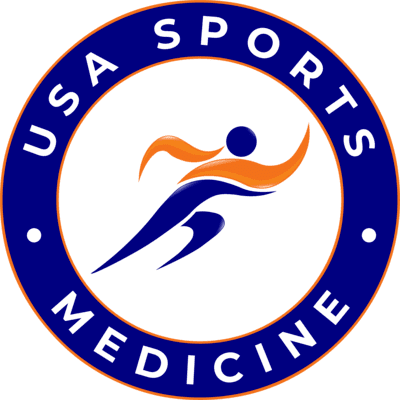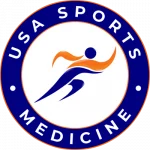Knee pain is a common complaint among people of all ages. The causes of knee pain can range from the wear and tear of everyday activities to serious medical conditions such as arthritis or an injury. Common symptoms include swelling, stiffness, tenderness, and difficulty moving your knee joint.
In most cases, knee pain can be managed with non-surgical treatments such as physical therapy, over-the-counter medications, and lifestyle changes. In some cases, however, more comprehensive interventions may be necessary to reduce pain and improve function. If treated in a timely manner, Platelet-rich Plasma (PRP) Therapy may be a viable option for managing chronic knee pain and achieving long-term results.
PRP Therapy is an innovative treatment that uses the patient’s own blood to help heal damaged tissue and reduce inflammation in the joints. If you are experiencing chronic knee pain and difficulty moving your knee joint, here’s all you need to know about PRP therapy and how our PRP injection for knee arthritis in Boca Raton and Miami Beach can help.
What are the Main Causes of Knee Pain?
Knee pain can be caused by a variety of issues, ranging from mild to severe. Some of the most common causes of knee pain include:
Arthritis: Osteoarthritis is the most common form of arthritis that affects millions of adults and is one of the leading causes of disability in older people.
Tendinitis: Tendinitis occurs when tendons become inflamed due to overuse or injury. It often affects the knees, ankles, and shoulders.
Sports Injury: Injury to any part of the knee joint, such as cartilage tears or ligament tears, can cause pain around the affected area.
Bone fractures: A fracture in the bones of the knee can cause pain, swelling, and instability of the joint.
Patellar tendinopathy: Patellar tendinopathy occurs when the tissue connecting the kneecap to the shinbone becomes inflamed, resulting in pain and stiffness around the kneecap area.
Meniscus tears: A meniscus tear occurs when the cartilage between the thigh bone and shin bone is torn or damaged, causing pain and instability of the knee joint.
Osteoarthritis: Osteoarthritis is a degenerative condition in which the cartilage that cushions the bones deteriorates, resulting in painful movement and stiffness of the joints.
Connective tissue disorder: Connective tissue disorders are conditions that affect the connective tissues such as ligaments, tendons, and muscles around joints. PRP injection for this disorder is best for treating joint laxity and is safer than performing cortisone injections in the injured joint. These conditions can cause pain, stiffness, and a limited range of motion.
How does Platelet-Rich Plasma Therapy for Knee Pain Work?
Platelet-rich plasma (PRP) therapy is a treatment option we offer for knee pain caused by various conditions. This therapy uses the patient’s own blood to create a concentrated solution of platelets that can be injected directly into the affected area. Platelets contain growth factors and proteins that help repair damaged tissue, promote healing, and reduce inflammation in the joint, resulting in decreased pain and improved mobility.
PRP therapy is generally considered safe and effective when used on its own or in combination with other treatments such as physical therapy or steroid injections. It can be used to treat chronic knee pain due to osteoarthritis, ligament tears, tendonitis, bursitis, patellar tendinopathy, meniscus tears, and other common knee injuries. Typically, PRP therapy is available at regenerative medicine clinics and is performed by trained physicians in sports medicine – we offer the treatment at our USA Sports locations.
What Results Can I Expect from PRP for Knee Pain?
Patients who undergo PRP for knee pain in Boca raton can typically expect to experience noticeably less pain and an improved range of motion within a few weeks of their treatment. In some cases, patients may need multiple treatments in order to achieve the desired results. Additionally, people should be aware that this type of treatment does not provide immediate relief; it takes time for the platelets to stimulate tissue healing and growth. This is why most physicians recommend that patients engage in physical therapy and other forms of exercise following their procedure in order to take full advantage of the effects of the therapy.
Of course, recovery times may vary greatly per patient. It’s crucial that you follow your doctor’s instructions carefully and avoid activities that may cause injury to the affected area until it has fully recovered.
What are the Other Benefits of PRP Therapy?
In addition to knee pain, PRP therapy has been used to treat a variety of other musculoskeletal conditions and injuries, such as ligament damage, plantar fasciitis, and rotator cuff tears. It can also be used to promote healing in bone fractures and labral repairs.
PRP therapy is not only limited to the knee joint; it can be used on almost any part of the body that is experiencing pain or discomfort. Many athletes have found relief from PRP therapy for their shoulder, elbow, and ankle joints. Additionally, some studies have shown that PRP injections may be beneficial for those suffering from spinal cord injuries and even hair loss!
How to Get Started with PRP for Knee Pain
If you are considering PRP therapy for your knee pain, speak with a professional physician to determine if it is the right treatment option for you. Your physician will review your medical history and current symptoms to ensure this type of treatment is appropriate.
At USA Sports, our team has a long history of experience providing PRP therapy to patients suffering from knee pain and other injuries. During your initial consultation, our staff of experienced clinicians will assess the extent of your condition and determine the best treatment option for you. If you are in Florida, call us today to learn more about plasma injections for knee pain in Boca Raton and Miami Beach.

